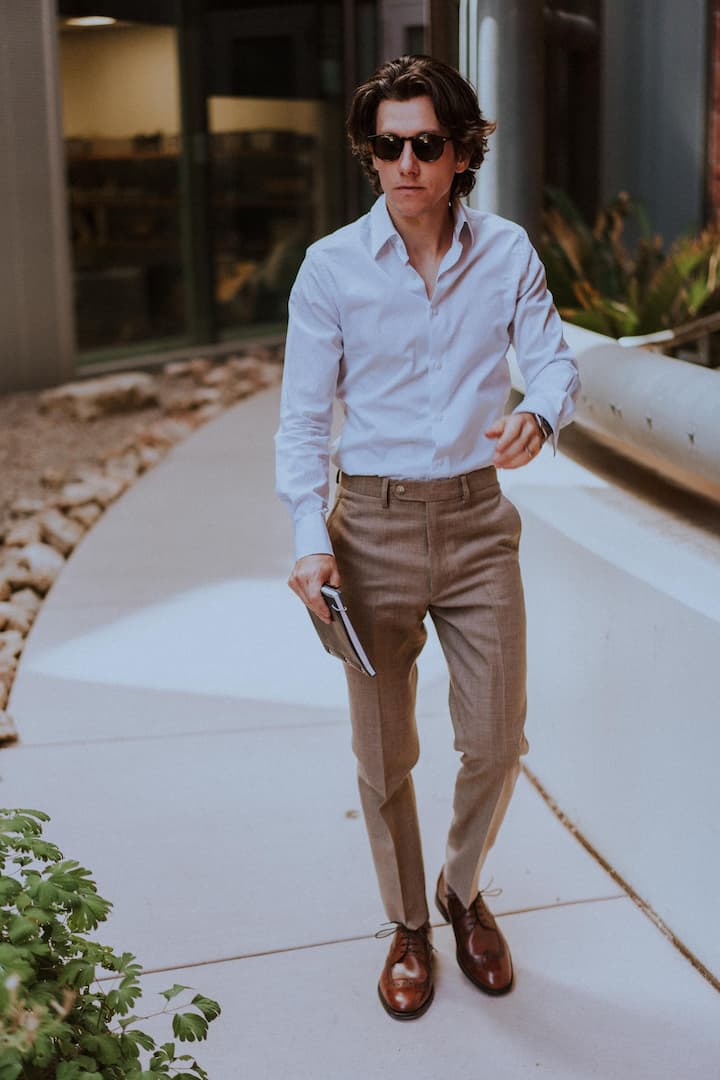How to Choose Suitable Men’s Work Attire for the Job
Various industries have developed their own distinctive uniforms according to the aesthetic and functional requirements of the occupations in that industry. Some uniforms, such as those worn by police officers, firefighters and astronauts, are well-known. But there are many other professions that also call for a different kind of work attire for men. Continue reading to find the best one for yourself!
Selecting Workwear Based on the Occupation

source: pinimg.com
Every piece of workwear is created by analysing the nature of the job and the utility of the uniform when performing duties in a particular environment. While it’s important to look polished and professional on the job, comfort should be a top priority. What is required in a certain domain will vary, so it is important to take into account the specific roles and responsibilities of each job.
The Construction Industry
The industrial and construction industries simply demand durable uniforms to withstand long hours of physical work. A typical ensemble for construction workers consists of a pair of boots, sturdy and resilient work shorts and a shirt with reflective tape. It’s important to ensure that all safety regulations are followed, such as wearing a hard hat and protective eyewear when necessary.
Since there’s usually a lot of legwork involved, wearing long-lasting work shorts is essential. Your legs are likely to come into contact with a lot of dirt and debris and you definitely don’t want to be forced to throw out a pair of pants because they tore too easily.
Utility shorts are usually made of breathable, lightweight fabrics such as cotton-polyester blends that provide comfort in hot and humid environments. Despite their airy construction, they can withstand a lot of wear and tear and are unlikely to rip or get damaged.
Perhaps the most crucial aspect to look into is the fit. The shorts should be roomy enough to allow for flexibility while not being too baggy. The waistband should be comfortable and adjustable and the length should sit just above or below the knee. If you need extra protection from debris, consider purchasing shorts with built-in cushioning.
Most workwear shorts also come with handy pockets that offer easy access to small tools and equipment. They’re also often equipped with loops that can be used to hang tools and pouches for additional storage. No more bending down or rummaging through a toolbox whenever you need something – all your items are right at your fingertips.
The Restaurant Industry

source: alicdn.com
The restaurant industry is one of the most creative when it comes to staff uniforms. The uniform of a restaurant is frequently chosen based on the restaurant’s scale; for example, whether it is upscale or fast food casual. Restaurant employees of various types will frequently wear different uniforms that are more appropriate for their specific roles at the restaurant.
Chefs and cooks, for example, always their staple wear white chef hats and chef coats, whereas servers wear aprons with pockets for pens and order pads. A restaurant’s unique uniform choices can reveal a lot about the type of establishment it is. Employees at a fast food joint may be required to wear fun custom-made t-shirts as a uniform, whereas servers at a Michelin-starred restaurant are usually required to wear formal uniforms.
The Hospitality Sector
Uniforms in the hospitality industry, like those in the restaurant industry, are creatively based on branding while also being functional for employee roles. In a hotel or resort, each member of the team will wear a different uniform to reflect their job. The concierge and front desk, for example, will frequently wear a uniform that is styled according to the hotel or resort’s ethos while also looking formal. Housekeepers, bellhops, and other hotel employees will wear uniforms that reflect their position.
Typically, hospitality uniforms include shirts and uniforms with the wearer’s name tag or embroidered name to make guests feel friendly with the staff and more welcomed. Staff at a Caribbean resort, for example, may wear tropical-print shirts and work shorts, whereas staff at a Downtown hotel are more likely to wear a more neutral and business-casual uniform. It is also common for uniforms to be coloured and styled to match the hotel’s logo, colours and branding.
The Medical Industry

source: alicdn.com
Healthcare workers wear a variety of uniforms that are less concerned with style and more concerned with functionality, especially because the goal of their protective wear is to cover up their body so all you really see is in fact their medical uniform.
The white coat, as you know, is the staple wear for doctors and other specific colours for surgeons of higher ranks. They are light in colour, durable, and comfortable, making them ideal for working in a hospital setting. Scrubs also are sanitary clothing worn by physicians but especially nurses, dentists, and other healthcare workers.
The Aviation Industry
Pilots and flight attendants can be easily identified in a crowd, and you can probably tell who they fly for just by looking at them. This is because aviation uniforms have a distinct appearance. Colours and designs will vary depending on the airline’s branding. Regardless, most pilots and flight attendants still dress in a clean, tailored, and professional manner befitting the industry they represent.
The Business World

source: pinimg.com
While the business world is not technically an industry, it is frequently required in administrative offices of all of the above-mentioned industries, as well as in other industries such as journalism and politics.
The business world’s unwritten uniform exists very much, and how someone dresses can often tell you if they are a business professional such as a CEO of a firm, a secretary or a lawyer to name a few. While each office has its own dress code, you can generally expect a business casual or business formal appearance.
